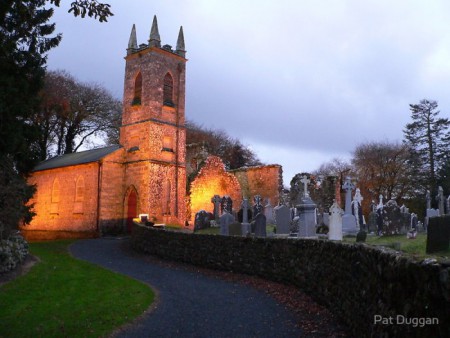Located in a beautiful tranquil riverside setting, St. Mullins is one of Ireland’s most important archaeological sites which contains aspects of both religious and secular history. It remains very much a place of tradition with both the graveyard and holy well still in use. It is located in the scenic surroundings of south Carlow the Blackstairs Mountains overlooking it on the east and Mount Brandon on the west. The place name in Irish is Tighe Moling, which translated means the House of Moling. and is the location of a monastic site built by St. Moling. He was born in 614 AD, and during his lifetime he became a poet, artist and craftsman as well as a priest. Under the patronage of Mae doc ( Aidan ) of Ferns he built his monastery in St. Mullins in the 7th century. During his lifetime many miracles were attributed to him. He died in the year 696 and is buried in St. Mullins. The Monastic ruins here all post date the lifetime of St. Moling show that his monastic settlement continued for many centuries. Following the construction of a Church of Ireland Church in 1811, the site continued to be a place of regular worship right up to recent times. Today, there can be found the remains of three churches on the site, including the Tempall Mor ( the great Church ) and it is reputed to contain the grave of St. Moling. The remains of numerous domestic buildings in addition to the base of a round tower complete the main structures. The site also contains the cross section of a ninth century granite High Cross which depicts the Crucifixion.
If you are interested in ancient monastic sites, then St. Mullins is certainly worth visiting.

The base of the round tower

St. James's Cell

